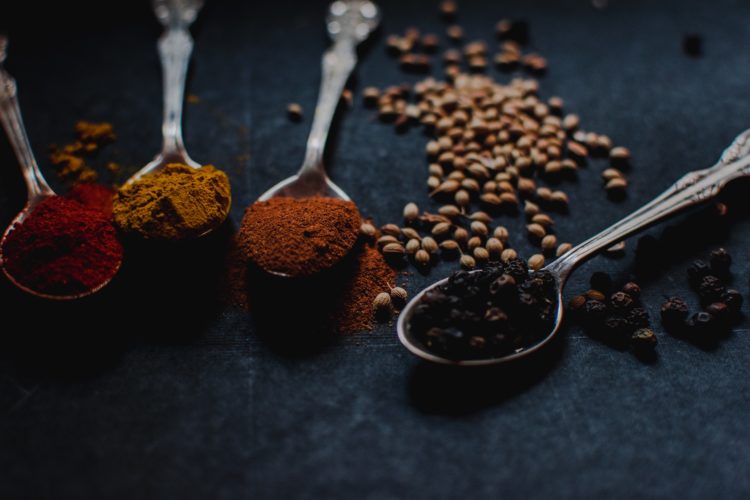Spices are so integral to Indian cooking. They have the ability to completely transform a basic dish and give it that authentic touch. However, Indian cooking is also quite vast and a dish may or may not use many spices. And for a beginner, that might seem a bit confusing or overwhelming.
Indian food appeals to the entire globe but my non-Indian friends and colleagues keep mentioning how they cannot wrap their heads around the spices and the techniques of the cuisine. Indian cooking might also seem very intimidating for a beginner who loves to eat Indian food but does not necessarily know how to make it. While there is actually nothing that can be called as “Indian food,” some of the spices are common across all states. Each state in India does represent a mini country in itself, with their own disctict culinary heritage. It will not be possible to share each and every state’s spice mix, but the generic ones are pretty much the same everywhere.
So if you are a beginner and want to set up your pantry specifically for Indian cooking, you have landed at the right page. I have been cooking and eating Indian food and here is my two cents on essential spices in an Indian kitchen. This list is strictly on the basis of my personal knowledge and understanding of Indian spices. If you think I have missed out on anything, please let me know.
Ground Spices
1. Cumin powder – Jeera
I honestly have to think really hard if I have to name any Indian curry dish that does not have cumin in it. Cumin or jeera is an essential spice that Indians add to almost all of their “regular” dishes. If you’re thinking dals, curries, pulaos, biryanis or korma – cumin has to be there! So get hold of some cumin powder. And the fresher the better! I suggest you buy cumin seeds, dry roast them and grind them to a fine powder. The fragrance of fresh cumin powder is unmatched.
2. Turmeric powder – Haldi
Turmeric powder again is one of the key ingredients in Indian food. The yellow colour in any curry or gravy comes from turmeric, especially in all kinds of dal preparations. You can either get turmeric powder or also invest in raw turmeric. The benefits of adding turmeric in our diets has even been cited in Ayurveda. Turmeric contains several bioactive compounds that have powderful medicinal properties. Curcumin is the compound in it that is anti inflammatory, boosts immunity and protects the body against several diseases.
3. Coriander powder – Dhania
Coriander powder or dhaniya is another essential Indian spice which is used in all major curry preparations. Again, it’s best to buy the seeds, dry roast them and blend them to a powder than buy readymade coriander powder from the store. Croainder powder adds a lot of flavour to Indian preparations, and can also be used as a garnish to fresh chutneys and dips.
4. Black pepper powder – Kali mirch
Black pepper is also used in Indian cooking. While it may not be as common as thespices listed above, it is still a popular spice in Indian kitchens. I for one cannot deal with the absence of black pepper powder in my kitchen. I like to make my own black pepper powder by grinding black pepper seeds. Or just crush some seeds just in between cooking to add to my meals.
5. Red chili powder – Lal mirch
Indian food has the reputation of being extremely hot. While that might be the case for certain cuisines, it’s not a generic truth. The level of heat varies from region to region, and also as per personal preference. In my house for example, I never saw red chili powder in the pantry. We always used fresh or dried chillies as opposed to powder. But that’s not the case everywhere. But having said that, keeping some red chili powder is essential.
There are two kinds of red chili powder that goes into Indian cooking – deggi mirchi and Kashmiri mirchi. Deggi mirchi is the one which is actually hot. Kashmiri mirchi is not very hot but adds a beautiful red colour to dishes. It is used in tempering and also marination. You can keep a little of both as per your preference. Personally, I am a huge fan of Kashmiri chili powder.
6. Garam masala
Garam masala is a mixture of different whole spices that is usually added right at the end of the cooking process. It adds a beautiful flavour and warmth to dishes. The combination of garam masala spices varies from region to region. I come from the eastern part of India where our garam masala is a simple mix of cardamom, clove and cinnamon. But the spice mix can be a lot more than this simple ingredients. You can make your own garam masala or buy one from a really good brand.
7. Dried fenugreek – Kasuri methi
Dried fenugreek leaves or kasuri methi is a show stopper for many meals. It has an amazing flavour of its own that has the ability to change the game for a dish altogether. It is a garnish you must have in your kitchen and it makes way for amazing curries, dals, parathas or even subzis.
8. Dry mango powder – Amchur
Dry mango powder or amchur is used a lot in north Indian cooking. It adds a tang to curries and other preparations. It’s a personal favorite and I always keep some handy. It is also a great addition to koftas and parathas.
9. Cardamom powder – Elaichi
Green cardamom is used as a whole spice as well as in its powder form. It is an expensive spice as compared to the rest because of its superior flavour. The seeds are powdered to get a smooth powder that is added in many gravies as well as several Indian desserts. You can make it at home for best fragrance and flavour. Or you can buy it from a good brand.
10. Asafoetida – Hing
Asafoetida has a strong and pungent aroma that adds a beautiful flavour to curries and stews when tempered in oil.
Whole Spices
Here is a list of all the whole spices that go into making different Indian delicacies. It is used in tempering and garnishing in various dishes.
1. Green Cardamom – Elaichi
Whole green cardamoms are crushed and used to flavour many Indian dishes like pulao, biryanis, korma, curries, desserts and even for chai or tea.
2. Black Cardamom – Badi Elaichi
Black cardamoms have a tough skin and are mainly used as a part of garam masala to flavour savory dishes like curries, pilafs, stews or dals. They can also be used to flavour broths. It is vastly different from the green cardamom in terms of texture, aroma or flavour.
3. Cloves – Laung
Cloves are used for tempering dishes as well as to make tea. It has a refreshing aroma and is also used as a medicine for dental ailments.
4. Cinnamon – Dalchini
Cinnamon can be used for tempering as well as for flavouring some sweet dishes.
5. Cumin seeds – Jeera
Cumin seeds are used extensively as a tempering element in various Indian dishes. It’s always a good idea to keep some cumin seeds handy.
6. Nigella seeds – Kalonji
Mostly used in Eastern cooking (Benagli and Assamese) to flavour their briths and curries, kalonji is one of my favorite whole spices. It’s aroma is very subtle but unique. It is used to flavour pickles, added to curries and stews, added to paratha and puri doughs and also added as a garnish.
7. Fennel seeds – Saunf
Fennel seeds are used in pickles and also in curries and for tempering. It has several medicinal properties and adds a distinct flavour to dishes.
9. Carrom seeds – Ajwain
Carrom seeds are not cooked in oil, but added to doughs, pickles and also eaten as it is as a cure to digesive issues. I love adding them to my parathas!
10. Mace – Javitri
Another flavoring spice mostly added to biryanis and rich gravies. Mace has a distinct flavour and requires just a little usage at a time.
11. Mustard seeds – Rai
Mustard seeds are very common in Indian cooking as used as a tempering agent. It is added to curries, broths and is used to flavour chutneys and pickles too.
12. Saffron – Kesar
One of the most expensive spices in the world, the wonders of saffron are many. It is used in savory as well as sweet dishes. If you are making biryani or a royal phirni/kheer, saffron is a must.
13. Nutmeg – Jaiphal
Nutmeg has a very distinct and pungent flavour and fragrace. It is used to add warmth to several Indian curries and sweet dishes. The dried seeds will last in your kitchen forever.
This is obviously not the end of it all. There will be many more local varieties in different states. Indian food also uses a lot of condiments. This is my list as far as spices are concerned.
I hope this helps you and you find it easier to set up your pantry for Indian cooking. If you have any doubts, please reach out to me in comments or my social media handles.
Find me on Instagram – www.instagram.com/slurrpilicious
Find me on Facebook – www.facebook.com/slurrpilicious
Find me on Youtube – https://www.youtube.com/channel/UCA-cJoo27OLSCswI4sy6lzA?
Happy cooking!




Very good informative article. Thanks for information